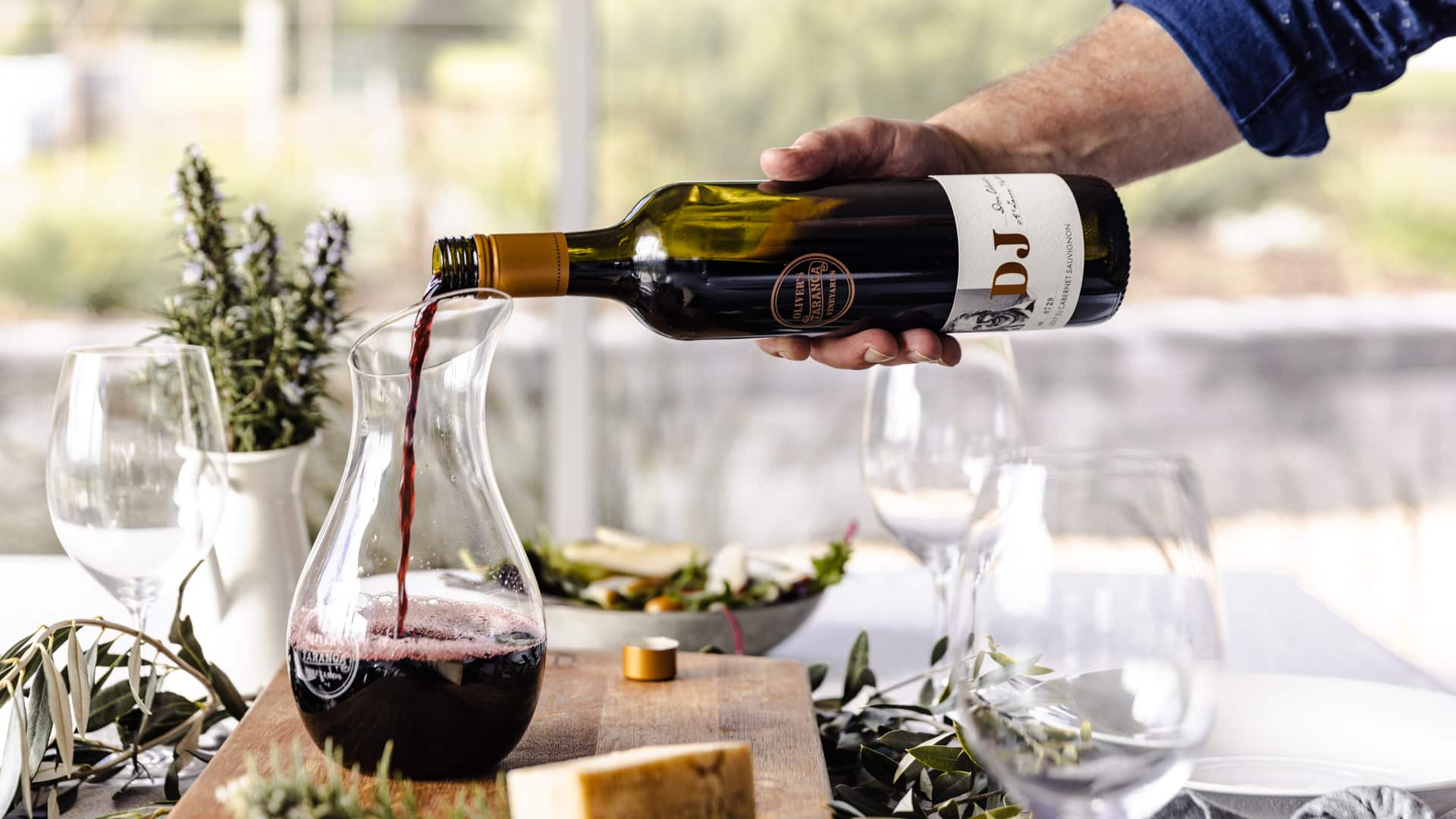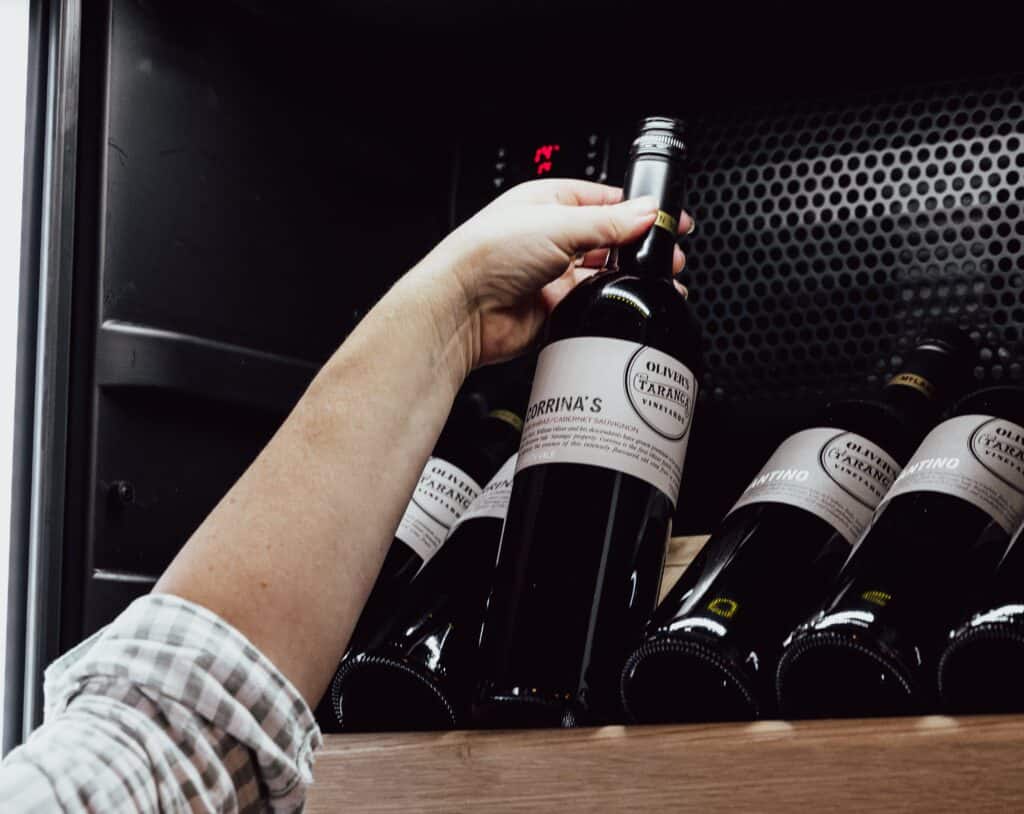
Have you been saving a few bottles in your cellar for a special occasion…
…but never quite get around to opening them?
We all do it, we tuck some fancy bottles away in the cellar, storage cupboard, wine fridge, under the stairs, for a ‘special occasion’ and then that occasion never quite seems to show up.
Well this Easter, while you have the time, and hopefully some great company, why not grab a couple of those bottles and make this your ‘special occasion’? Nothing better than sharing a great bottle of wine with friends and family.
And to help you make the most of that special bottle, we’ve put together some simple serving tips to make that aged wine shine!

Why should you decant your wine?
If you haven’t come across one yet, a wine decanter is a great tool for serving aged wine. Generally made from glass or crystal, it’s often a vessel with a wide base and narrow neck, designed to expose the wine to as much air as possible to aerate it, something older wines can really benefit from after being in a bottle for many years. These can be as fancy or understated as you like, in fact you can even use a simple jug for this purpose if need be.
To use a decanter when you open an older wine, you simply open the bottle, then pour it into the decanter. It is recommended you do this slowly to avoid any sediment from the wine making it into the decanter. The sediment won’t hurt you, it’s just nicer without any of the gritty bits in the final wine. TOP TIP: Use a tea strainer to pour through if you really want to make sure all of the sediment is removed.
Once the wine is in the decanter, you can put it straight on the table to serve. And whilst you can decant wines just before you have them and it still makes a difference, it’s recommended to decant the wine an hour or so before you plan on having it to get the best result.
Is it worth the extra effort? We definitely think so. So if you haven’t done it before, try a sip before and after you decant to see how much difference it makes, we promise you’ll notice a change.
Does it have a cork?
If your wine bottle has a cork, there is a very small chance it could have a wine fault called ‘cork taint’, a fancy word for a specific kind of mould that can grow in the natural cork fibre and passes on an unpleasant smell and taste to the wine, that we call ‘corked’. Some people are much more sensitive to the smell and taste than others, but if you’re trying to figure out if it’s in your wine, we often describe the smell as being like a wet dog or mushrooms. Weird, we know, but once you smell it, you’ll see what we mean. If your wine does have this fault, the wine has been spoiled. This is the main reason we have changed all of our wines over to screwcaps at Oliver’s Taranga.
Why does aged wine look and taste different?
Aged wines, especially with a decent amount of age, will often smell and taste quite different to the same wine when it’s younger. As wines age, they lose much of the intense, bright fruit characters we usually associate with them, and gain more subtle aged characters instead. Depending on the variety and wine, this can include things like lighter colour, softer texture and less intensity.
If you’ve never had a chance to try an aged wine, we’d highly recommend giving it a go, so you can see why people make such a fuss about putting wines away. There’s so much to love about aged wines and the magic that can happen in the space of only a few years.

How do different varieties age?
Different varieties and wine styles can have very different journeys when they age. Some only need a few extra years in the cellar, and some can still shine after decades…
Below are a few of our hero wines and their ageing potential:
Fiano – People often assume white wines can’t age, and while many white varieties are best young, aged Fiano has some very interesting characters. For example, our 2024 Fiano would age over the next 5 years, building in texture and generosity, the colour will start to golden and the nutty flavours will increase. Our Anfore Fiano already has an extra year on it, and has really benefitted from the extra time to develop rich, generous toasty characters.
If you’re serving an aged Fiano, here are a few great food suggestions:
- Chicken with 40 cloves of garlic
- Prawn Paella with chorizo
- Pumpkin Tortellini with burnt butter and sage
- Lobster with garlic butter
- A delicious creamy chicken curry
Grenache – A lighter style of red, the ideal range for an aged Grenache would be between 5-8 years. When aged, Grenache will lose some of its more primary fruit berry characters, but gain more spice and savoury notes. Both our 2024 Grenache and 2022 RW Grenache come from a great vintages, so worth popping one in the cellar for sure.
If you’re serving an aged Grenache, here are a few great food suggestions:
- Margherita pizza with prosciutto and chilli honey
- Duck or veal terrine wrapped in Serrano ham
- Veal and mushroom ragu with pappardelle
- Antipasto
- Truffled scrambled eggs
Shiraz – The richer the Shiraz, the longer it will be able to age, and will also benefit the most from the extra years in the cellar. Depending on the quality of the wine, Shiraz has the potential to age for 10+ years. As Shiraz ages, the blackberry fruit and spice diminishes, while the leathery and savoury characters increase and the tannin structure feels smoother on the palate. We have vintages in our cellar going back to the very first vintage of Oliver’s Taranga in 1994. Watch out for our museum released HJ Shiraz or Shiraz, which we age perfectly for you in our cellar if you don’t have the time or space. But, if you do have the space, putting down some bottles of HJ Shiraz and our 2022 Shiraz, will really reward the drinker in the years to come.
If you’re serving an aged Shiraz, here are a few great food suggestions:
- Osso Bucco with gremolata
- Slow roasted rib eye with bearnaise sauce
- Beetroot, goat’s cheese and field mushrooms
Cabernet – Cabernet is the king of the cellar, a wine whose natural tannin structure and good acid most lend itself to the benefits of age. Our DJ Cabernet can age for 10+ years and is a perfect match to lots of dishes.
If you’re serving an aged Cabernet, here are a few great food suggestions:
- Slow roasted lamb shoulder with pomegranate, mint and yoghurt
- Grilled lamb skewers on rosemary sticks with roasted tomoatoes and tzatziki
- Afghani lamb pilaf with roasted root vegetables
- An incredible vintage cheddar to end a fabulous meal
We hope this has given you some extra knowledge to both pull something out of the cellar this Easter, as well as motivation to put some wines in the cellar too for future. Another top tip – wines in magnum bottles age really well also, and are a perfect idea to put away to celebrate a special birthday in the future.
So many rewards to reap from aged wines!
Corrina, Brioni, Sam & the OT team
